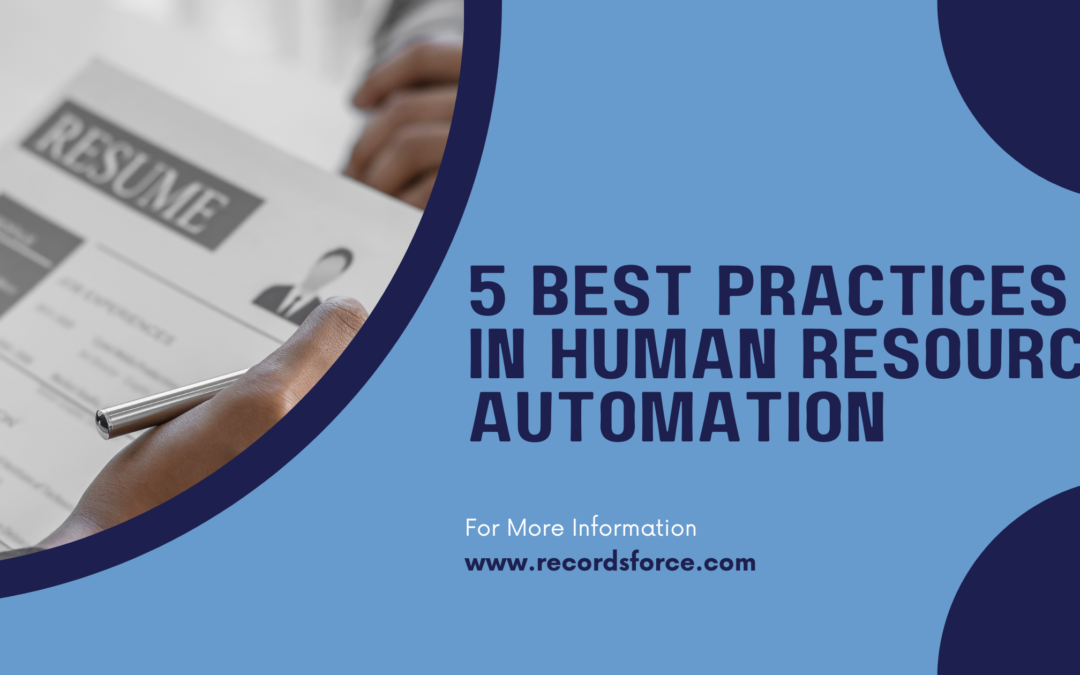Today’s opportunity for improving your HR business processes has never been easier or more affordable. But understanding what is “best practice” and what is just a fad is getting harder and harder to know in the ever changing landscape of HR technology. When thinking about your processes, like your hiring workflow or your review process, there are now endless automation opportunities that might exist, but remember to start with the basics.
5 steps to remember when automating any human resource business processes:
Step One – Identify the value and goals of the business process. This will help you keep your automation project inside of scope and focused on what is truly important. For instance, if you are automating your hiring process, the value and goals are already well known. The value of the hiring process is that it provides the critical talent that drives the success of the company.
As a goal, you want to attract and hire the most talented, driven and passionate employees who best mirror the company’s core values. You want the process to be easy and straightforward for applicants to make sure no one drops out of the process because you made it too difficult. You want the applicant’s signed documents to be legal e-signatures and you want the documents tracked, collected and filed into the employee file automatically and with accordance to HR compliance guidelines. This would be a very successful HR Hiring Automation project if it achieved all of these goals and delivered the full value of the HR hiring process.
Step Two – Map it out. Before you do anything new, understand what you are currently doing and why you are doing it. This requires process mapping tools like Visio or Lucid Charts to document your HR process step by step. Walk through the entire process you want to improve and understand how each step contributes to the end goal. Start earlier in the process than you think your automation project may reach and map beyond its end point to understand the inflows and outflows of information gathered in the process.
Step Three – Optimize. Before you attempt to automate your process, optimize your current practices. It doesn’t do you any good to automate an outdated, poorly conceived process. Once you’ve created your HR process map for the workflow you want to automate, you can evaluate if everything you’ve been doing is still appropriate, needed or sufficient to get the job done. Make modifications to your existing process before starting your automation project. This will enable you to test changes before you create your automated workflow solution and will allow you to capture value before you automate.
Step Four – Making a Buy vs. Build decision. Before you engage your IT department, evaluate the existing tools you may already have. If you have a system like PeopleSoft/Oracle, SAP, Salesforce, QuickBooks or any other popular business management systems. you may already own process automation workflow technology built right into your software.
Even if it’s not built into the base product, these companies frequently have a marketplace of third party developed products that can integrate directly into your ERP system and will have many of the features and functionality that you need right out of the box. Search the websites of the companies you already have software investments in to see what they might have available.
If you find your situation requires more customization than these out of the box software products can offer, or if they are offered at a price that is too high for you to afford, consider outsourcing your process. Companies like Recordsforce can manage your scanning and email ingestion process and can also provide, if needed, cloud-based workflow automation at a fraction of the cost of these big software systems. Outsourcing also offers the benefit of reducing the IT departments role in your automation, speeding up your implementation and lowering your costs further.
Step Five: Prepare to digitize! If you are going to automate your HR processes, you have to be prepared to scan your paper HR records. There’s no way around it. You can’t automate a process that has paper documents built into the workflow. Paper isn’t trackable or transparent and is prone to loss or misplacement. It’s limited to moving only at the speed of people, not the speed of light, like digital information can.
Here are the top ways you can reduce and eliminate your reliance on paper:
- Create a digital employee file that is managed in a formal electronic content management system like Recordsforce Cloud.
- Move your HR forms to an E-form format and collect e-signatures.
- Scan your inbound HR documentation that hasn’t been converted to an E-form and move it into an electronic content management system like Recordsforce Cloud.
- Implement an integration between your email system and your document management system so that your HR staff can file emailed HR documents directly into an employee file.
If automating your hiring or other HR process is of interest to you, learn more by scheduling a conversation with one of our experts!

